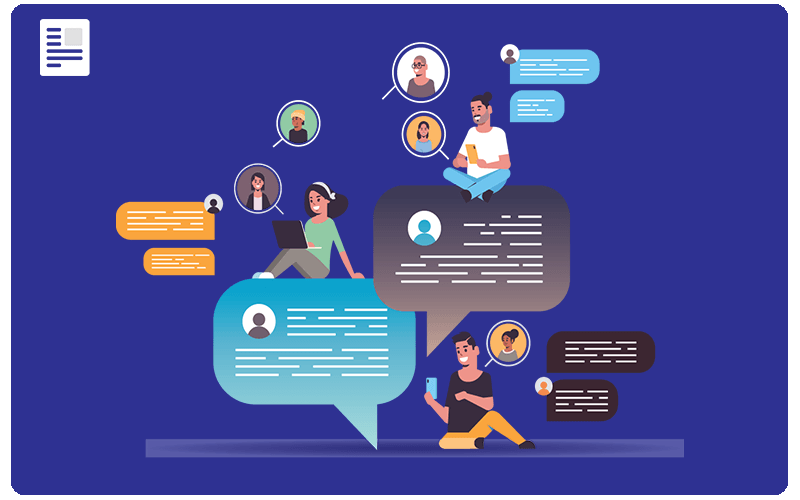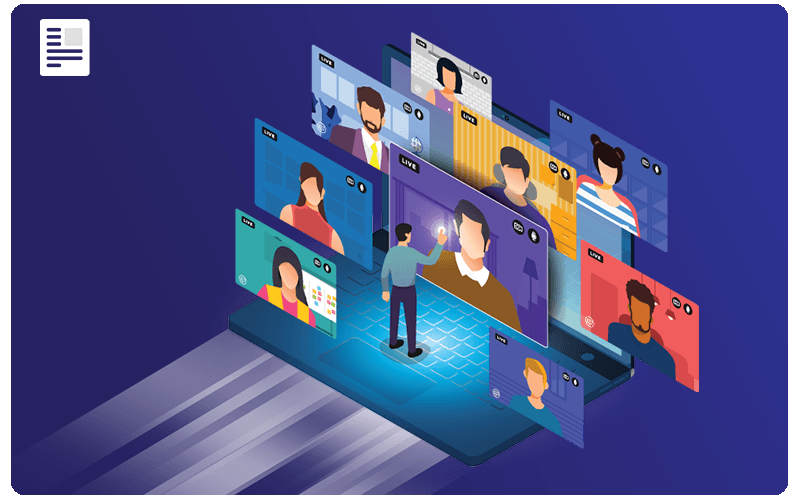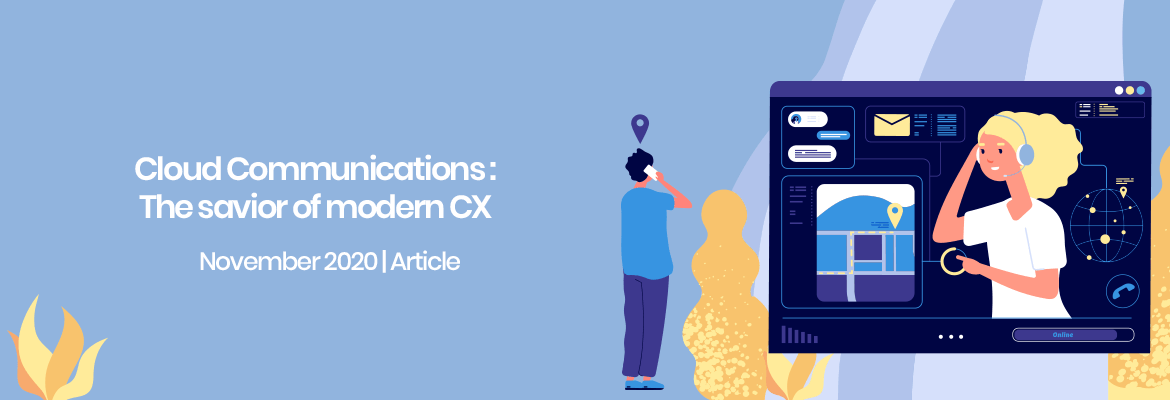
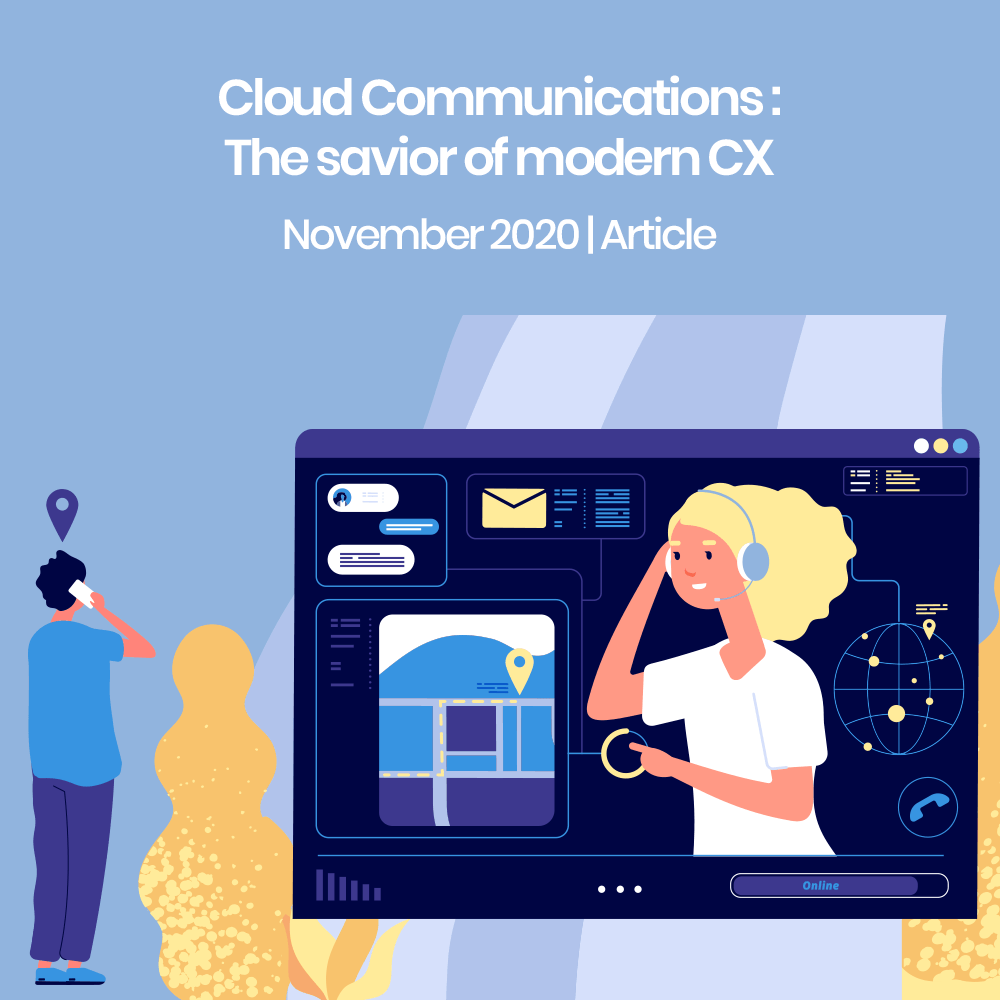
As leading brands begin to leverage customers to bolster their new digital sense, many tactics are in play to set them apart for the coveted race to the finish line. Those who strategically plan, reach the finish line. Others bow out or settle for less. Regardless, the race just keeps getting interesting and complicated as more dimensions of ‘experience’ keep getting piled on to this holy grail where leaders now believe that investing top dollar in this discipline is the real deal (good for them). With Amazon analyzing recent purchases to make better recommendations and Netflix coaxing their viewers to watch TV shows similar to those they have viewed in the past – creating a hyper-personalized experience seems to be the way of the future.
Steve Cannon, the President & CEO of Mercedes-Benz USA famously called Customer Experience the new ‘Marketing’ and every research out there supports his statement overwhelmingly. Temkin Group’s ROI of Customer Experience 2020 suggests that organizations that earn $1 billion annually can on average make an additional $700 million within 3 years of investing in customer experience. Deloitte’s take is that customer-centric organizations are 60% more profitable than those that are not and Accenture believes that 75% of consumers are more likely to purchase from an organization that knows their name and recommends them products based on their purchase history. In a world where happy customers share their experience with an average of 6 people, unhappy ones with 15 people and where millennials are willing to spend 38% extra for the right customer care – organizations need to incorporate customer feedback and resolve customer complaints by finding the right ingredients to make things right for them.
Star Service
 In the U.S, an estimated $1.6 trillion is lost each year due to poor customer service, according to an Accenture strategy study. Lack of follow ups, no first call resolution and idle time reflect negatively on a customer agent and cloud telephony features like answering voice mail, predictive dialing, automatic script are attempting to make agents more productive in an effort to provide stellar service to the consumers. Organizations that successfully implement such customer experience initiatives focus on gathering and analyzing customer feedback and attempt to determine the past, present and future views of the customer (Gartner). Past views include all previous interaction histories, the present consists of the general transactional information of today, while the future view is based on predictions through a customer’s future interactions with the organization based on behavior patterns. Using surveys, web-forms, or Net Promoter Score (NPS) initiatives; reading through their comments, suggestions and opinions; connecting operational data with big data; having a unified database display information on a dashboard – can all help an organization deliver 5-star customer service.
In the U.S, an estimated $1.6 trillion is lost each year due to poor customer service, according to an Accenture strategy study. Lack of follow ups, no first call resolution and idle time reflect negatively on a customer agent and cloud telephony features like answering voice mail, predictive dialing, automatic script are attempting to make agents more productive in an effort to provide stellar service to the consumers. Organizations that successfully implement such customer experience initiatives focus on gathering and analyzing customer feedback and attempt to determine the past, present and future views of the customer (Gartner). Past views include all previous interaction histories, the present consists of the general transactional information of today, while the future view is based on predictions through a customer’s future interactions with the organization based on behavior patterns. Using surveys, web-forms, or Net Promoter Score (NPS) initiatives; reading through their comments, suggestions and opinions; connecting operational data with big data; having a unified database display information on a dashboard – can all help an organization deliver 5-star customer service.
“Can I get a human on the line, please?”
Often chatbots masquerading as AI assistants can be limited and unsophisticated, making them only suitable for uncomplicated situations at best.  This can ultimately frustrate customers, as chatbots are only equipped to handle a narrow set of scenarios with narrow outcomes (thus far). Customers on the other hand typically expect deeper and long-lasting relationships that deliver value but most outfits do not possess the requisite acumen to personalize their customer interactions enough, which often leads to high churn rates amongst even the most loyal customers. To bridge this gap some human presence in the process helps, whether it is over calls, emails or social media. In 2018, Gartner predicted that 25% of customer service operations would use Virtual Customer Assistants by 2020, but about 70% consumers surveyed about their customer service preferences, said they would rather speak to a human customer service rep or chatbot. Today, (in 2020) 90% of organizations are planning to deploy AI enabled communication strategies within 3 years, and the number is expected to grow to 40% by 2023. Sometimes, the solution for challenges in automation can be a more evolved version of automation itself, but paired with human assistance. An organization can start personalizing and hence, enhance their customer interactions through intuitive AI solutions that connect with human experts when unsure how to respond; helping the machine learn from interactions for future correspondence. AI assistants can also build knowledge about customer behavior and associated patterns to make customer interactions more successful. For humans dealing with customers, differentiating them according to their profiles– their interactions, their history, preferences, and demographic leaves a long-lasting impression.
This can ultimately frustrate customers, as chatbots are only equipped to handle a narrow set of scenarios with narrow outcomes (thus far). Customers on the other hand typically expect deeper and long-lasting relationships that deliver value but most outfits do not possess the requisite acumen to personalize their customer interactions enough, which often leads to high churn rates amongst even the most loyal customers. To bridge this gap some human presence in the process helps, whether it is over calls, emails or social media. In 2018, Gartner predicted that 25% of customer service operations would use Virtual Customer Assistants by 2020, but about 70% consumers surveyed about their customer service preferences, said they would rather speak to a human customer service rep or chatbot. Today, (in 2020) 90% of organizations are planning to deploy AI enabled communication strategies within 3 years, and the number is expected to grow to 40% by 2023. Sometimes, the solution for challenges in automation can be a more evolved version of automation itself, but paired with human assistance. An organization can start personalizing and hence, enhance their customer interactions through intuitive AI solutions that connect with human experts when unsure how to respond; helping the machine learn from interactions for future correspondence. AI assistants can also build knowledge about customer behavior and associated patterns to make customer interactions more successful. For humans dealing with customers, differentiating them according to their profiles– their interactions, their history, preferences, and demographic leaves a long-lasting impression.
“Do you have a WhatsApp number?”
 Consumers typically toggle between multiple channels of media on their smart phones; phone calls, emails, text messages and social media apps are all used to make purchases online among other activities. If one channel goes unanswered, the next one is used and so on. Therefore, having multi-channel experience of a high standard is essential to success but the extent to which this degree of orchestration and personalization can be carried out depends heavily on an organization’s audience maturity, customer data management practices and the overall technology stack they employ. 60% of organizations believe they were delivering a good mobile experience, however, only 22% of consumers felt the same, revealed a Temkin Group Research. An Omni-channel customer experience can be improved by asking customers their preferred medium of communication – call, email, or through social media. Moreover, ensuring the mobile experience is consistent with the overall brand experience by presenting various options across all channels can effectively engage customers and make their customer journey hassle-free.
Consumers typically toggle between multiple channels of media on their smart phones; phone calls, emails, text messages and social media apps are all used to make purchases online among other activities. If one channel goes unanswered, the next one is used and so on. Therefore, having multi-channel experience of a high standard is essential to success but the extent to which this degree of orchestration and personalization can be carried out depends heavily on an organization’s audience maturity, customer data management practices and the overall technology stack they employ. 60% of organizations believe they were delivering a good mobile experience, however, only 22% of consumers felt the same, revealed a Temkin Group Research. An Omni-channel customer experience can be improved by asking customers their preferred medium of communication – call, email, or through social media. Moreover, ensuring the mobile experience is consistent with the overall brand experience by presenting various options across all channels can effectively engage customers and make their customer journey hassle-free.
“Why has your customer agent sent me a friend request?”
Call center agents are expected to deliver consistently positive customer experience and simultaneously, be the first in line to prevent fraud. 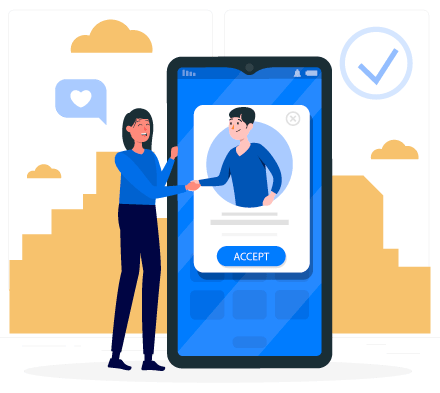 But sometimes an organization’s call center security can be in the precarious position of being only as strong as their weakest customer service agent – those that end up misusing a customer’s personal information. Some agents may cross professional ethical boundaries and access their customers’ personal records. With cloud telephony, phone numbers are secured through a number masking feature. A number masking or call masking feature is a way for organizations to safeguard their customers’ identities and prevent the misuse of sensitive information, both enabled by the anonymization of a customer’s phone number. This feature allows connecting to multiple parties without revealing either party’s phone number. Number masking solutions are provided by third-party cloud telephony platforms and are made possible by Voice APIs that enable organizations to set up proxies for telephone numbers. A commuting app in India by the name Quick Ride recently leveraged a number of masking features to protect the safety of their customers. As for most organizations that provide transport services, this feature aligns with Quick Ride’s duty to nurture trust and reduce chances of harassment since 50% of their customers are female. To ensure the customers’ privacy, an organization may adhere to rules based on authorization, logging, confidentiality and encrypted data. Keeping tabs on the actions of users creates an audit trail that can be reviewed when something goes wrong and helps identify patterns that reveal security flaws and gaps, or system compromises. Confidentiality can be ensured by making sure data is viewed or shared only with authorized parties. Moreover, encryption makes it difficult to accidently or maliciously modify data because a set of keys is needed to decrypt it – these keys are usually stored securely and access to them is limited.
But sometimes an organization’s call center security can be in the precarious position of being only as strong as their weakest customer service agent – those that end up misusing a customer’s personal information. Some agents may cross professional ethical boundaries and access their customers’ personal records. With cloud telephony, phone numbers are secured through a number masking feature. A number masking or call masking feature is a way for organizations to safeguard their customers’ identities and prevent the misuse of sensitive information, both enabled by the anonymization of a customer’s phone number. This feature allows connecting to multiple parties without revealing either party’s phone number. Number masking solutions are provided by third-party cloud telephony platforms and are made possible by Voice APIs that enable organizations to set up proxies for telephone numbers. A commuting app in India by the name Quick Ride recently leveraged a number of masking features to protect the safety of their customers. As for most organizations that provide transport services, this feature aligns with Quick Ride’s duty to nurture trust and reduce chances of harassment since 50% of their customers are female. To ensure the customers’ privacy, an organization may adhere to rules based on authorization, logging, confidentiality and encrypted data. Keeping tabs on the actions of users creates an audit trail that can be reviewed when something goes wrong and helps identify patterns that reveal security flaws and gaps, or system compromises. Confidentiality can be ensured by making sure data is viewed or shared only with authorized parties. Moreover, encryption makes it difficult to accidently or maliciously modify data because a set of keys is needed to decrypt it – these keys are usually stored securely and access to them is limited.
“I’ve memorized the lyrics to the Music on hold by now!”
 Abandoned calls in a contact center are a major key performance indicator of customer experience. The lower the rate, the better it is for the organization as it is a potential customer retention risk. As communication technologies converge and evolve, reliance on contact centers is also expected to increase drastically. These provide expanded computing power of the cloud to overcome call volumes and lags. The advanced features of predictive dialers eliminate agent idle time that aid in making the process of these calls much better as well. Cloud enabled automatic call back solutions also provide options for customers to receive call backs from a call center agent instead of waiting on hold and with new age conversation methods, bots can quickly take over and find the reason the customer engaged in the first place.
Abandoned calls in a contact center are a major key performance indicator of customer experience. The lower the rate, the better it is for the organization as it is a potential customer retention risk. As communication technologies converge and evolve, reliance on contact centers is also expected to increase drastically. These provide expanded computing power of the cloud to overcome call volumes and lags. The advanced features of predictive dialers eliminate agent idle time that aid in making the process of these calls much better as well. Cloud enabled automatic call back solutions also provide options for customers to receive call backs from a call center agent instead of waiting on hold and with new age conversation methods, bots can quickly take over and find the reason the customer engaged in the first place.
Score the remaining four stars; through the TransformX way
TransformX can help clients achieve customer-centricity through a blend of its Cloud Communications and Digital Customer Readiness Offerings and sub-offerings that assist in the acquisition of a new CPaaS solution and layout bespoke customer success journeys for that acquisition. The Existing CPaaS Review and CPaaS Program oversight sub-offerings further provide a comprehensive value, impact, and technological review of an existing CPaaS solution and help you ensure program success. TransformX clients have leveraged these offerings over the years to add value to their customer relationships, reduced costs of acquisition, increased customer satisfaction scores (CSAT, NPS, etc.), increased customer retention, and grown customer lifetime value across the board. Visit our Success Page for further details and we look forward to assisting you and your teams in the success of your next Customer initiative; connect with us now!
As leading brands begin to leverage customers to bolster their new digital sense, many tactics are in play to set them apart for the coveted race to the finish line. Those who strategically plan, reach the finish line. Others bow out or settle for less. Regardless, the race just keeps getting interesting and complicated as more dimensions of ‘experience’ keep getting piled on to this holy grail where leaders now believe that investing top dollar in this discipline is the real deal (good for them). With Amazon analyzing recent purchases to make better recommendations and Netflix coaxing their viewers to watch TV shows similar to those they have viewed in the past – creating a hyper-personalized experience seems to be the way of the future.
Steve Cannon, the President & CEO of Mercedes-Benz USA famously called Customer Experience the new ‘Marketing’ and every research out there supports his statement overwhelmingly. Temkin Group’s ROI of Customer Experience 2020 suggests that organizations that earn $1 billion annually can on average make an additional $700 million within 3 years of investing in customer experience. Deloitte’s take is that customer-centric organizations are 60% more profitable than those that are not and Accenture believes that 75% of consumers are more likely to purchase from an organization that knows their name and recommends them products based on their purchase history. In a world where happy customers share their experience with an average of 6 people, unhappy ones with 15 people and where millennials are willing to spend 38% extra for the right customer care – organizations need to incorporate customer feedback and resolve customer complaints by finding the right ingredients to make things right for them.
Star Service

In the U.S, an estimated $1.6 trillion is lost each year due to poor customer service, according to an Accenture strategy study. Lack of follow ups, no first call resolution and idle time reflect negatively on a customer agent and cloud telephony features like answering voice mail, predictive dialing, automatic script are attempting to make agents more productive in an effort to provide stellar service to the consumers. Organizations that successfully implement such customer experience initiatives focus on gathering and analyzing customer feedback and attempt to determine the past, present and future views of the customer (Gartner). Past views include all previous interaction histories, the present consists of the general transactional information of today, while the future view is based on predictions through a customer’s future interactions with the organization based on behavior patterns. Using surveys, web-forms, or Net Promoter Score (NPS) initiatives; reading through their comments, suggestions and opinions; connecting operational data with big data; having a unified database display information on a dashboard – can all help an organization deliver 5-star customer service.
“Can I get a human on the line, please?”

Often chatbots masquerading as AI assistants can be limited and unsophisticated, making them only suitable for uncomplicated situations at best. This can ultimately frustrate customers, as chatbots are only equipped to handle a narrow set of scenarios with narrow outcomes (thus far). Customers on the other hand typically expect deeper and long-lasting relationships that deliver value but most outfits do not possess the requisite acumen to personalize their customer interactions enough, which often leads to high churn rates amongst even the most loyal customers. To bridge this gap some human presence in the process helps, whether it is over calls, emails or social media. In 2018, Gartner predicted that 25% of customer service operations would use Virtual Customer Assistants by 2020, but about 70% consumers surveyed about their customer service preferences, said they would rather speak to a human customer service rep or chatbot. Today, (in 2020) 90% of organizations are planning to deploy AI enabled communication strategies within 3 years, and the number is expected to grow to 40% by 2023. Sometimes, the solution for challenges in automation can be a more evolved version of automation itself, but paired with human assistance. An organization can start personalizing and hence, enhance their customer interactions through intuitive AI solutions that connect with human experts when unsure how to respond; helping the machine learn from interactions for future correspondence. AI assistants can also build knowledge about customer behavior and associated patterns to make customer interactions more successful. For humans dealing with customers, differentiating them according to their profiles– their interactions, their history, preferences, and demographic leaves a long-lasting impression.
“Do you have a WhatsApp number?”

Consumers typically toggle between multiple channels of media on their smart phones; phone calls, emails, text messages and social media apps are all used to make purchases online among other activities. If one channel goes unanswered, the next one is used and so on. Therefore, having multi-channel experience of a high standard is essential to success but the extent to which this degree of orchestration and personalization can be carried out depends heavily on an organization’s audience maturity, customer data management practices and the overall technology stack they employ. 60% of organizations believe they were delivering a good mobile experience, however, only 22% of consumers felt the same, revealed a Temkin Group Research. An Omni-channel customer experience can be improved by asking customers their preferred medium of communication – call, email, or through social media. Moreover, ensuring the mobile experience is consistent with the overall brand experience by presenting various options across all channels can effectively engage customers and make their customer journey hassle-free.
“Why has your customer agent sent me a friend request?”
 Call center agents are expected to deliver consistently positive customer experience and simultaneously, be the first in line to prevent fraud. But sometimes an organization’s call center security can be in the precarious position of being only as strong as their weakest customer service agent – those that end up misusing a customer’s personal information. Some agents may cross professional ethical boundaries and access their customers’ personal records. With cloud telephony, phone numbers are secured through a number masking feature. A number masking or call masking feature is a way for organizations to safeguard their customers’ identities and prevent the misuse of sensitive information, both enabled by the anonymization of a customer’s phone number. This feature allows connecting to multiple parties without revealing either party’s phone number. Number masking solutions are provided by third-party cloud telephony platforms and are made possible by Voice APIs that enable organizations to set up proxies for telephone numbers. A commuting app in India by the name Quick Ride recently leveraged a number of masking features to protect the safety of their customers. As for most organizations that provide transport services, this feature aligns with Quick Ride’s duty to nurture trust and reduce chances of harassment since 50% of their customers are female. To ensure the customers’ privacy, an organization may adhere to rules based on authorization, logging, confidentiality and encrypted data. Keeping tabs on the actions of users creates an audit trail that can be reviewed when something goes wrong and helps identify patterns that reveal security flaws and gaps, or system compromises. Confidentiality can be ensured by making sure data is viewed or shared only with authorized parties. Moreover, encryption makes it difficult to accidently or maliciously modify data because a set of keys is needed to decrypt it – these keys are usually stored securely and access to them is limited.
Call center agents are expected to deliver consistently positive customer experience and simultaneously, be the first in line to prevent fraud. But sometimes an organization’s call center security can be in the precarious position of being only as strong as their weakest customer service agent – those that end up misusing a customer’s personal information. Some agents may cross professional ethical boundaries and access their customers’ personal records. With cloud telephony, phone numbers are secured through a number masking feature. A number masking or call masking feature is a way for organizations to safeguard their customers’ identities and prevent the misuse of sensitive information, both enabled by the anonymization of a customer’s phone number. This feature allows connecting to multiple parties without revealing either party’s phone number. Number masking solutions are provided by third-party cloud telephony platforms and are made possible by Voice APIs that enable organizations to set up proxies for telephone numbers. A commuting app in India by the name Quick Ride recently leveraged a number of masking features to protect the safety of their customers. As for most organizations that provide transport services, this feature aligns with Quick Ride’s duty to nurture trust and reduce chances of harassment since 50% of their customers are female. To ensure the customers’ privacy, an organization may adhere to rules based on authorization, logging, confidentiality and encrypted data. Keeping tabs on the actions of users creates an audit trail that can be reviewed when something goes wrong and helps identify patterns that reveal security flaws and gaps, or system compromises. Confidentiality can be ensured by making sure data is viewed or shared only with authorized parties. Moreover, encryption makes it difficult to accidently or maliciously modify data because a set of keys is needed to decrypt it – these keys are usually stored securely and access to them is limited.
“I’ve memorized the lyrics to the Music on hold by now!”
 Abandoned calls in a contact center are a major key performance indicator of customer experience. The lower the rate, the better it is for the organization as it is a potential customer retention risk. As communication technologies converge and evolve, reliance on contact centers is also expected to increase drastically. These provide expanded computing power of the cloud to overcome call volumes and lags. The advanced features of predictive dialers eliminate agent idle time that aid in making the process of these calls much better as well. Cloud enabled automatic call back solutions also provide options for customers to receive call backs from a call center agent instead of waiting on hold and with new age conversation methods, bots can quickly take over and find the reason the customer engaged in the first place.
Abandoned calls in a contact center are a major key performance indicator of customer experience. The lower the rate, the better it is for the organization as it is a potential customer retention risk. As communication technologies converge and evolve, reliance on contact centers is also expected to increase drastically. These provide expanded computing power of the cloud to overcome call volumes and lags. The advanced features of predictive dialers eliminate agent idle time that aid in making the process of these calls much better as well. Cloud enabled automatic call back solutions also provide options for customers to receive call backs from a call center agent instead of waiting on hold and with new age conversation methods, bots can quickly take over and find the reason the customer engaged in the first place.
Score the remaining four stars; through the TransformX way
TransformX can help clients achieve customer-centricity through a blend of its Cloud Communications and Digital Customer Readiness Offerings and sub-offerings that assist in the acquisition of a new CPaaS solution and layout bespoke customer success journeys for that acquisition. The Existing CPaaS Review and CPaaS Program oversight sub-offerings further provide a comprehensive value, impact, and technological review of an existing CPaaS solution and help you ensure program success. TransformX clients have leveraged these offerings over the years to add value to their customer relationships, reduced costs of acquisition, increased customer satisfaction scores (CSAT, NPS, etc.), increased customer retention, and grown customer lifetime value across the board. Visit our Success Page for further details and we look forward to assisting you and your teams in the success of your next Customer initiative; connect with us now!
